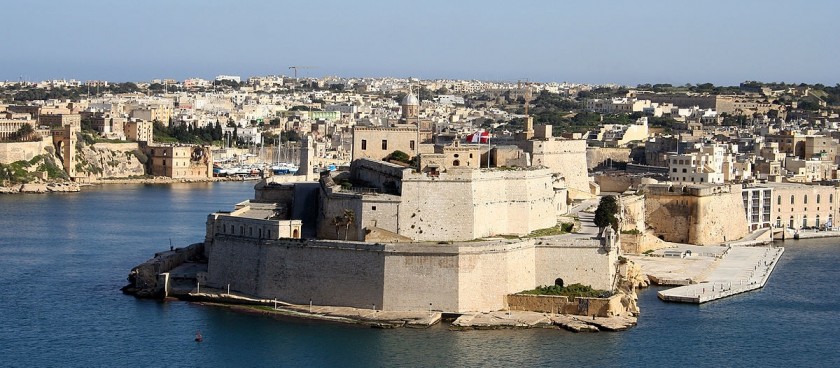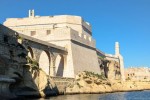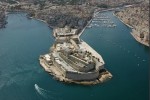- #MT47
- Birgu Waterfront, Birgu, Malta
- +35625401800
- info@heritagemalta.org
- http://www.facebook.com/FortStAngelo
- Working hours*:
Mon. - Wed. - Close
Thurs. - Sun - 10:00 - 16:30 - * - opening and closing times as well as entrance prices, are subject to alterations without notice. Visitors are advised to check before visiting.
- 35.8924715, 14.5178193 Copy to clipboard Copy
-
#Castles , #Museums
History and background
Fort St. Angelo played an important role during the Great Siege of 1565 but even before the present fort was built, the location was always of great importance because of its strategic position. Studies revealed that the land upon which the fort was built had been in use since prehistoric times and continued to be used throughout the ages. According to ancient Roman texts, a temple dedicated to Juno existed in the same area.
When the Knights landed in Malta in 1530 they found a castle that went by the name of Castrum Maris (Castle by the sea). This had been there since the 12th century. The Knights made Birgu their primary headquarters and erected the fort in place of the castle. The reinforcements and remodelling proved vital in the Great Siege that followed. Fort St. Angelo withstood the Ottoman attacks, repelling the enemy many times during the three long months of the summer of 1565.
Carlos de Grunenburgh repaired the fort in 1690, adding four gun batteries on the side of the fort facing the entrance to the Grand Harbour. During French occupation, the fort held a total of 80 guns. In 1800, the British Army placed 2 battalions within Fort St. Angelo, later passing it to the British Navy as a base for the Royal Navy in the Mediterranean. The fort was hit 69 times between 1940 and 1943.
The fort became the property of the Government of Malta after the British left the islands. In 1998, the Maltese Government gave the upper part of the fort to the Order of the Knights of St. John for a period of 99 years.
The Ghosts of Fort St. Angelo
According to popular belief, Fort St. Angelo is home to a number of ghosts. The best known of these is the Grey Lady, supposedly the ghost of a mistress of the Castellan De Nava. De Nava, a Sicilian Aragonese Captain who resided in the then castle in the late 13th century, wanted to get rid of his mistress and ordered two guards to take her away. The guards killed her and buried her body in the fort’s dungeon. De Nava was furious when he found out and had the two soldiers killed.
The Grey Lady was frequently seen in the early 1900s and also during World War II, when it is said she saved soldiers’ lives from aerial bombardment.
Other ghosts residing within the fort are thought to be the souls of Ottoman soldiers executed during the Great Siege of 1565.
Highlights – Why should you visit?
Fort St. Angelo is an important site for history lovers. It played a very important military role throughout the ages, withstanding attacks and providing headquarters for Knights, French and British armies. There is a lot to take in when visiting the fort, including:
An informative museum that paints a detailed picture of the fort’s importance in Malta’s rich history.
Staggering examples of artillery
Panoramic views of the Grand Harbour and the cities that surround it.


